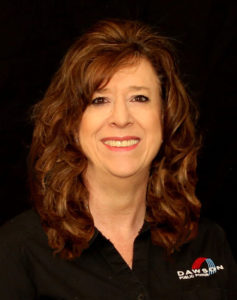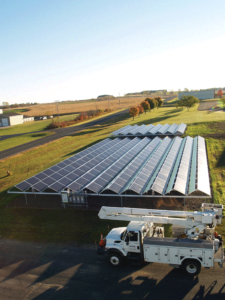
Gwen Kautz, Dawson Public Power District General Manager
By Gwen Kautz, Dawson PPD General Manager
gkautz (at) dawsonpower.com
308-324-2386
You’re looking over a piece of land you’ve owned for years that, quite frankly, has seen better days. It’s not prime land and it’s difficult to farm. You look down at a flyer in your hand that tells you a company will lease the land for 20 or 25 years in exchange to put a solar farm on your property. Land that you plan to pass down to your children and will still be in your name, but the income potential for this piece of ground tripled. What’s not to like about that offer?
Recently, Dawson PPD has reviewed some proposed solar farms designed specifically to sell power to us and use our distribution system. A distribution system designed to flow one way, not back and forth. Electricity doesn’t care which way it has to go – but regulators and substations do.
Every single piece of our distribution system’s design was built on one fact – that we buy power from a single supplier and we push it to the customer for their use. Whether that customer uses a lot or uses a little, it’s our job to get it there safely and reliably.
When Dawson PPD was formed in 1937, construction of an electric distribution grid was planned and developed to serve rural farmsteads with minimal electric use. The initial construction did not factor in much more than lights and an appliance or two. Over time, people began to use more products that needed electricity. As demand for electricity and our customer base grew, Dawson PPD upgraded its equipment and conductor to accommodate. But we have done so moderately and with great care in order to keep your rates as low as possible.

Photo by St. Croix Electric Co-op.
The rules for the flow of renewable power onto any distribution system are out of our control. We are required by federal regulation to purchase the power. However, we have the right to determine whether or not our system can, in fact, tolerate an intermittent supply and require upgrades that protect our investment and yours.
The ability to monitor electric loads to ensure proper voltage now has hiccups based on whether or not the sun is shining. When the sun shines, the solar panels push electricity onto our distribution system. At the same time, we’re taking in the same amount of electricity from our wholesale supplier, Nebraska Public Power District.
Think of it like two water pipes, each with their own water pressure. When the solar farm pushes electricity onto our distribution system, it is called reverse flow. As the sun sets or a cloud passes by, the electric flow becomes stronger from NPPD’s side and is considered the standard flow.
To allow reverse flow, we have to use protective equipment to regulate it so it doesn’t damage Dawson PPD’s conductor and equipment, and especially other customer services.
We also need to study the plans and size of the solar farm to determine whether or not that particular area can absorb the excess solar-generated electricity during low usage months like March and April. Our system is most heavily used during the summer crop irrigation and air conditioning months.
We also look to see if we need to upgrade parts/protection to let the solar-generated electricity move through a substation to a different circuit. If upgrades are needed, the entity putting in the solar farm must bear the cost. If they didn’t, all Dawson PPD customers would pay for something that no one really needed.
Lastly, we feel it would be unfair to pay MORE for solar electric power than what we pay to buy power from our wholesale supplier. If we did, our customers would end up subsidizing the purchases.
So, it’s not as simple as looking at an open field and saying “I think a solar farm would be great here.” There’s so much more to consider.
October 2017
